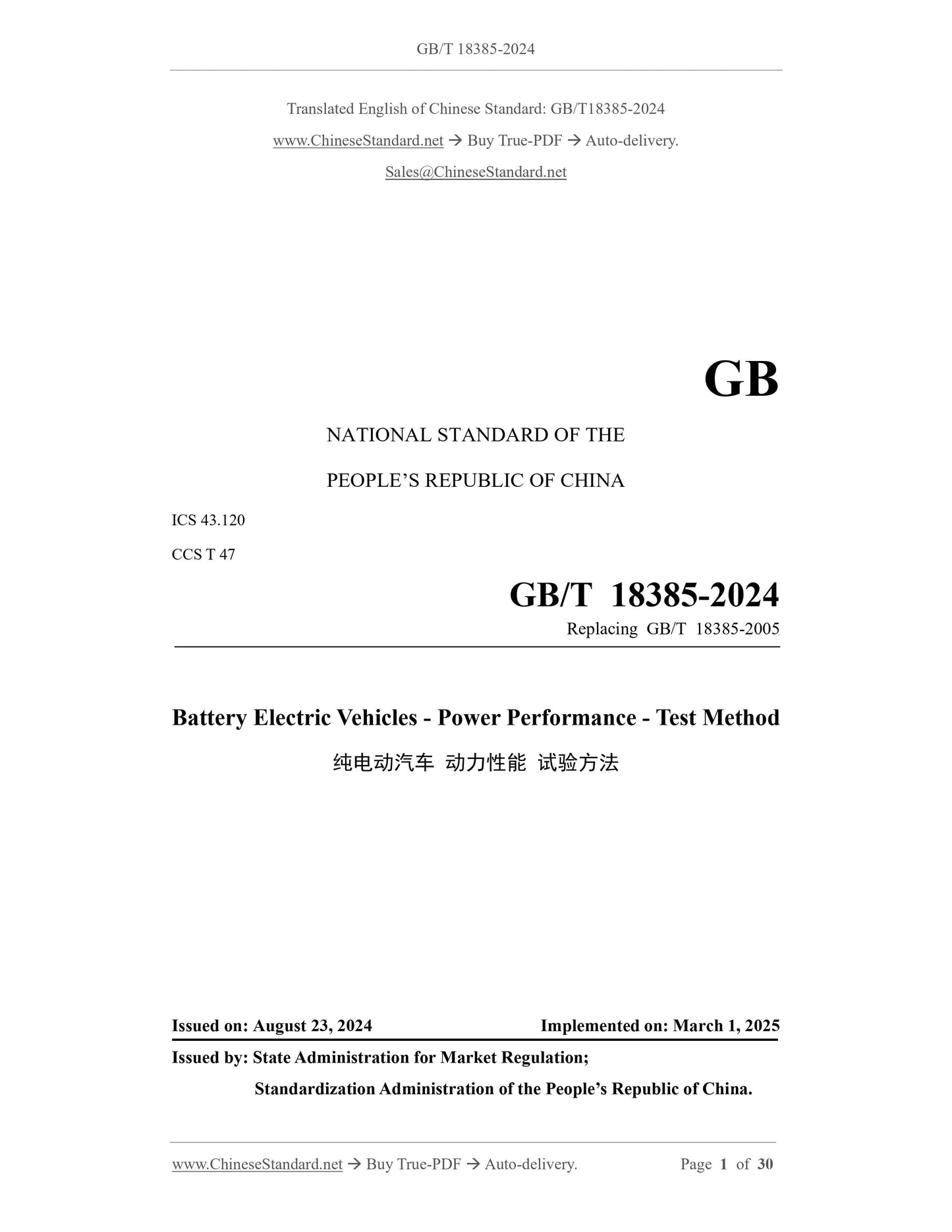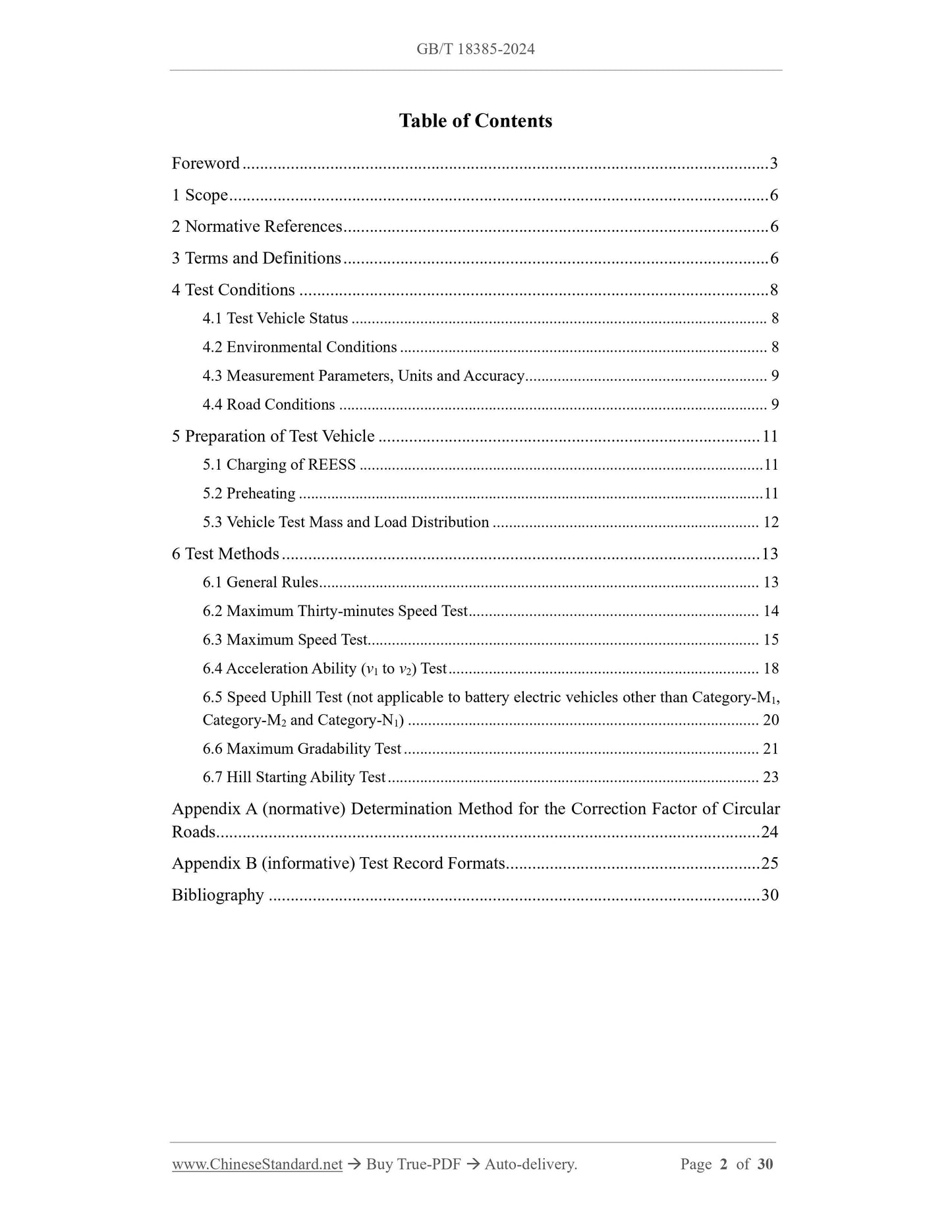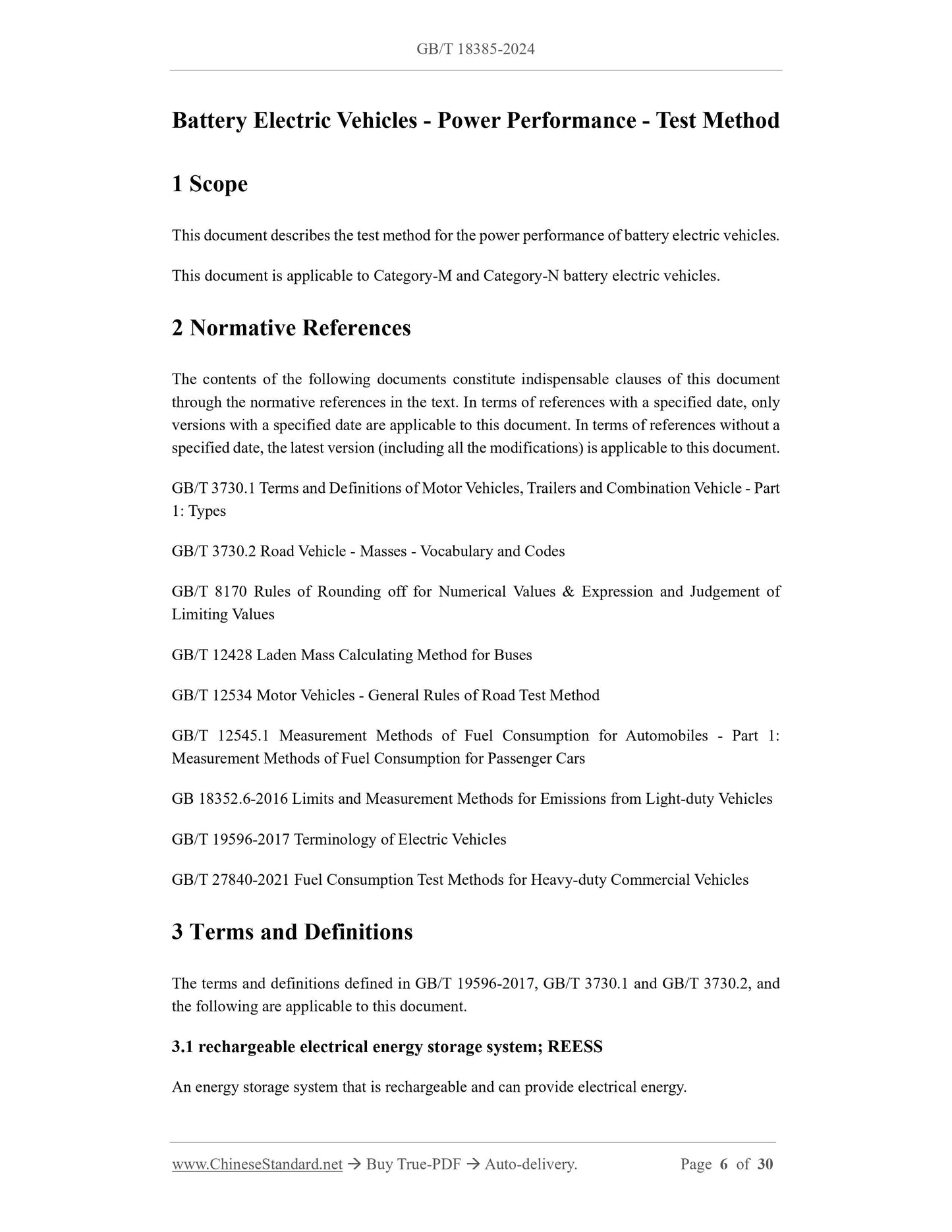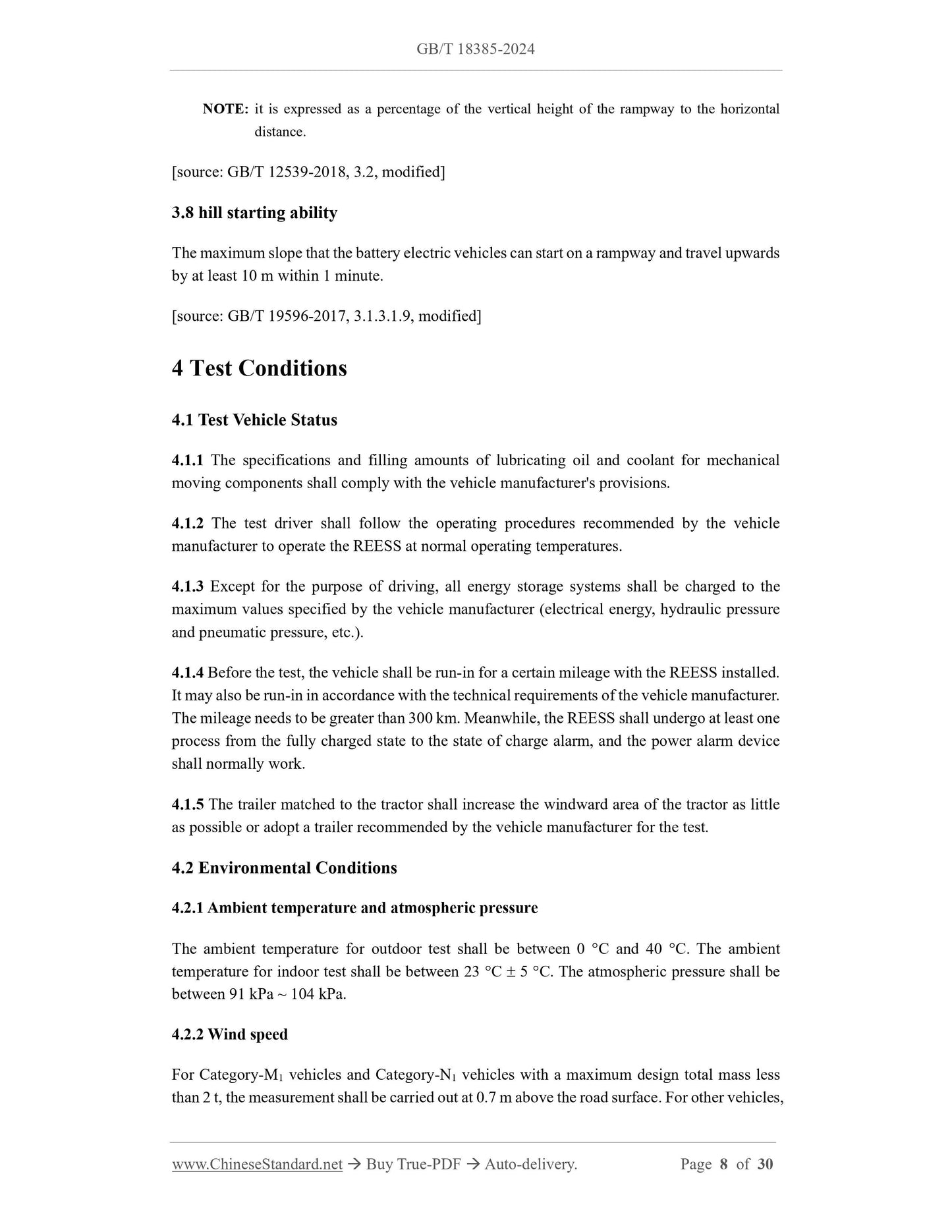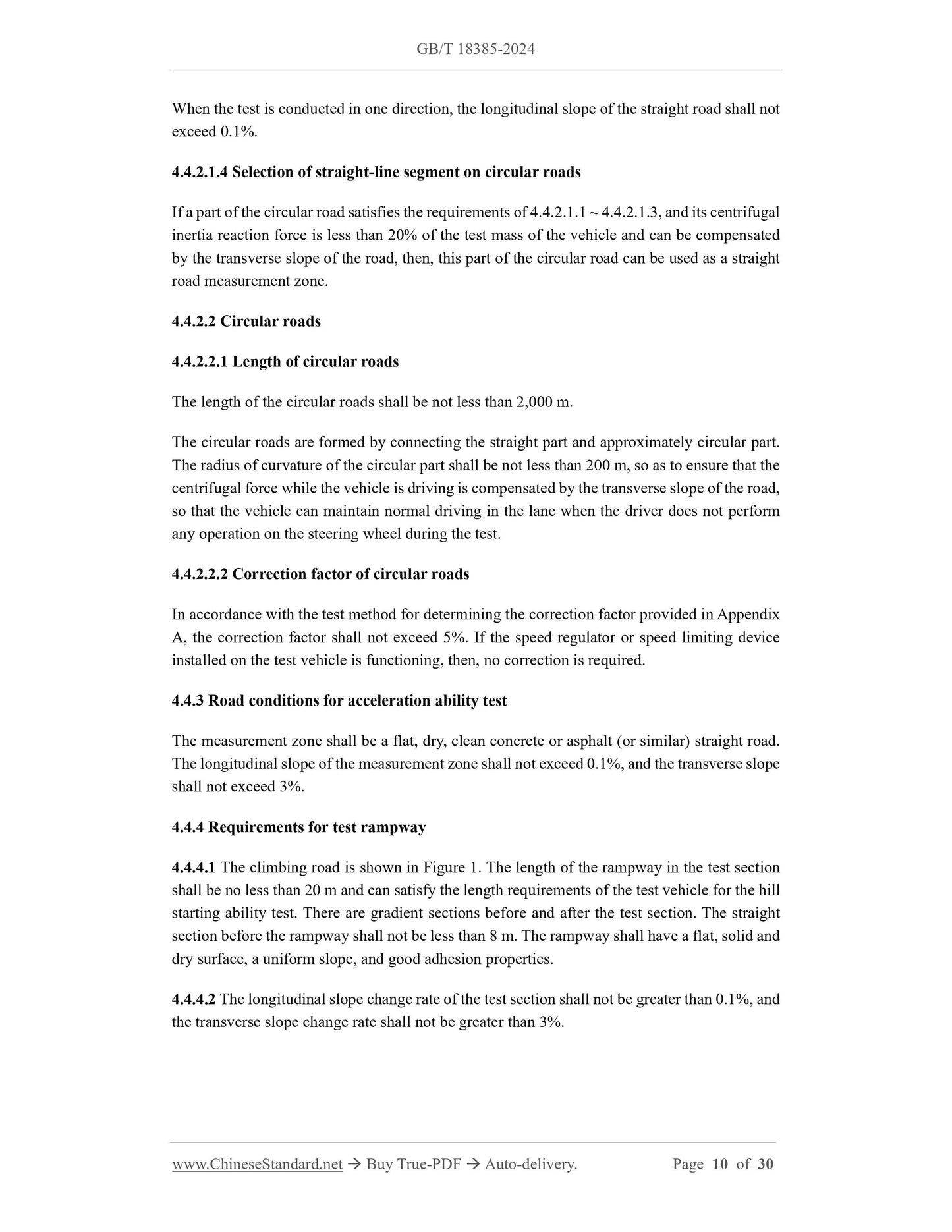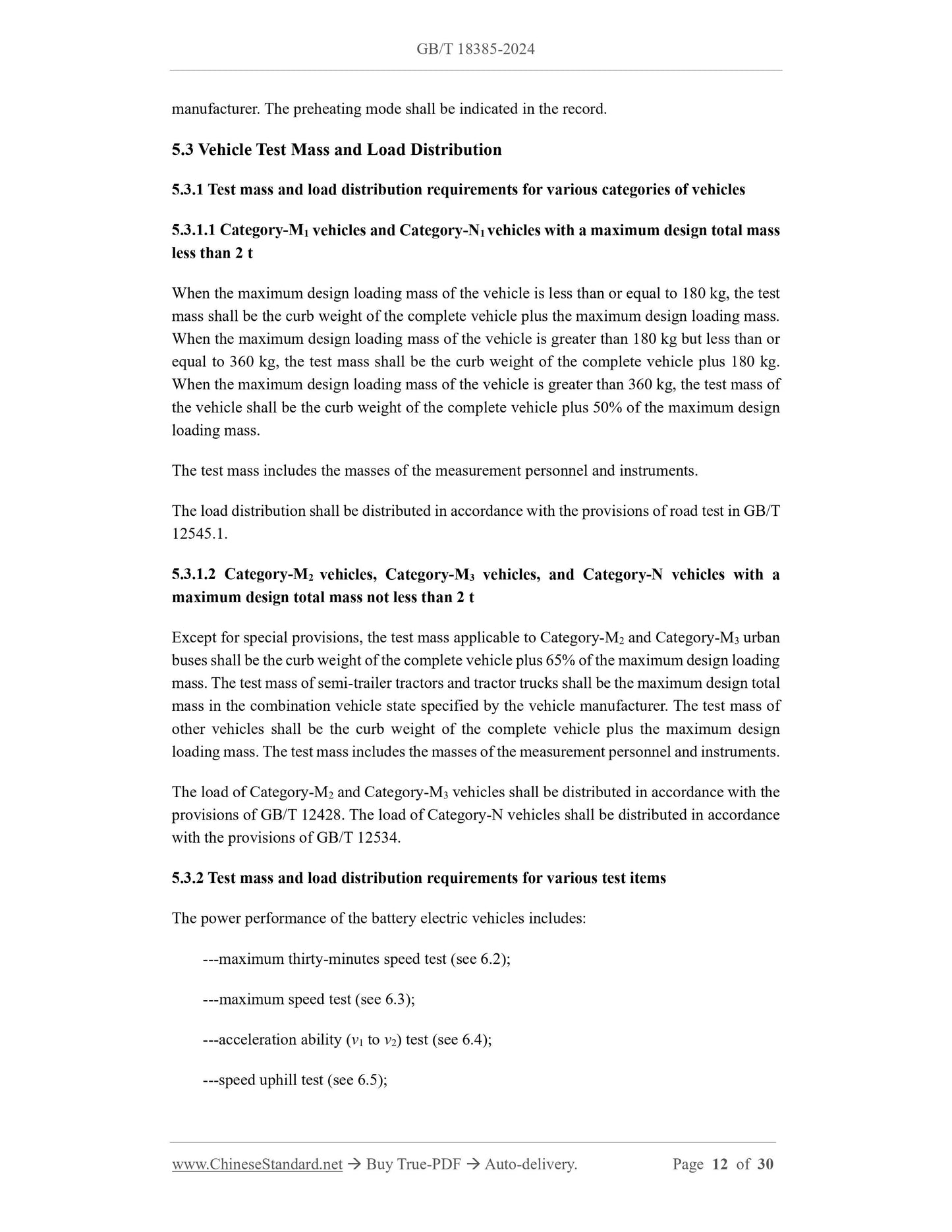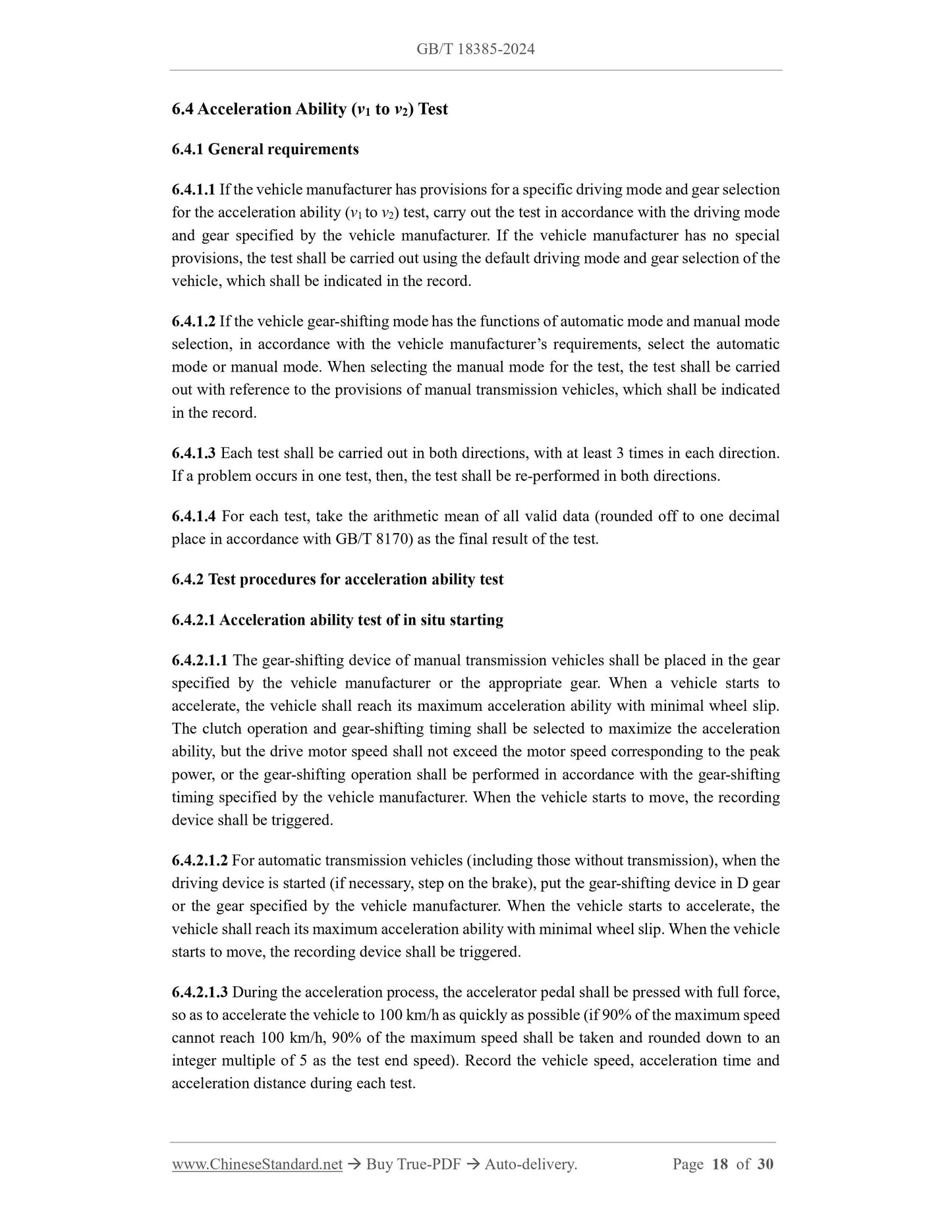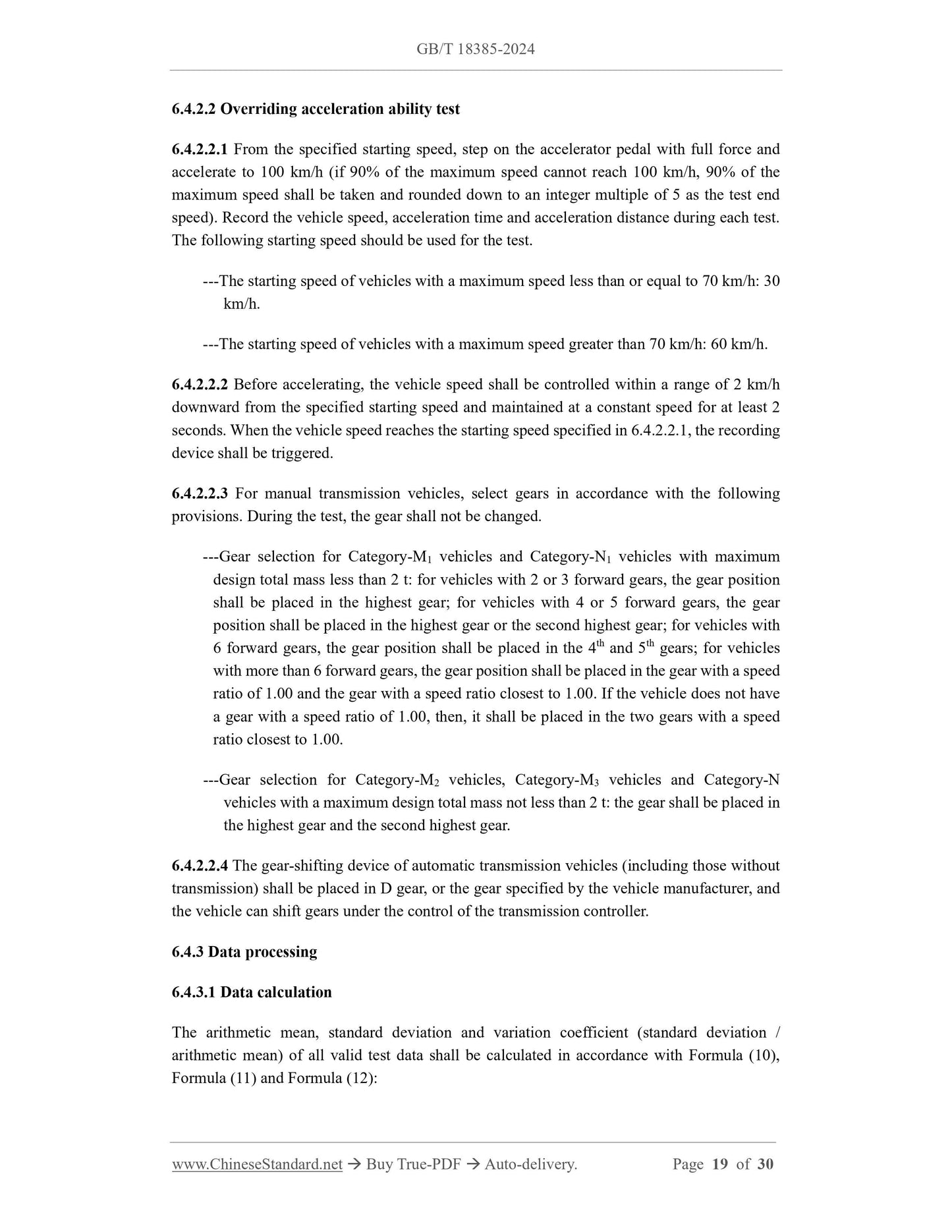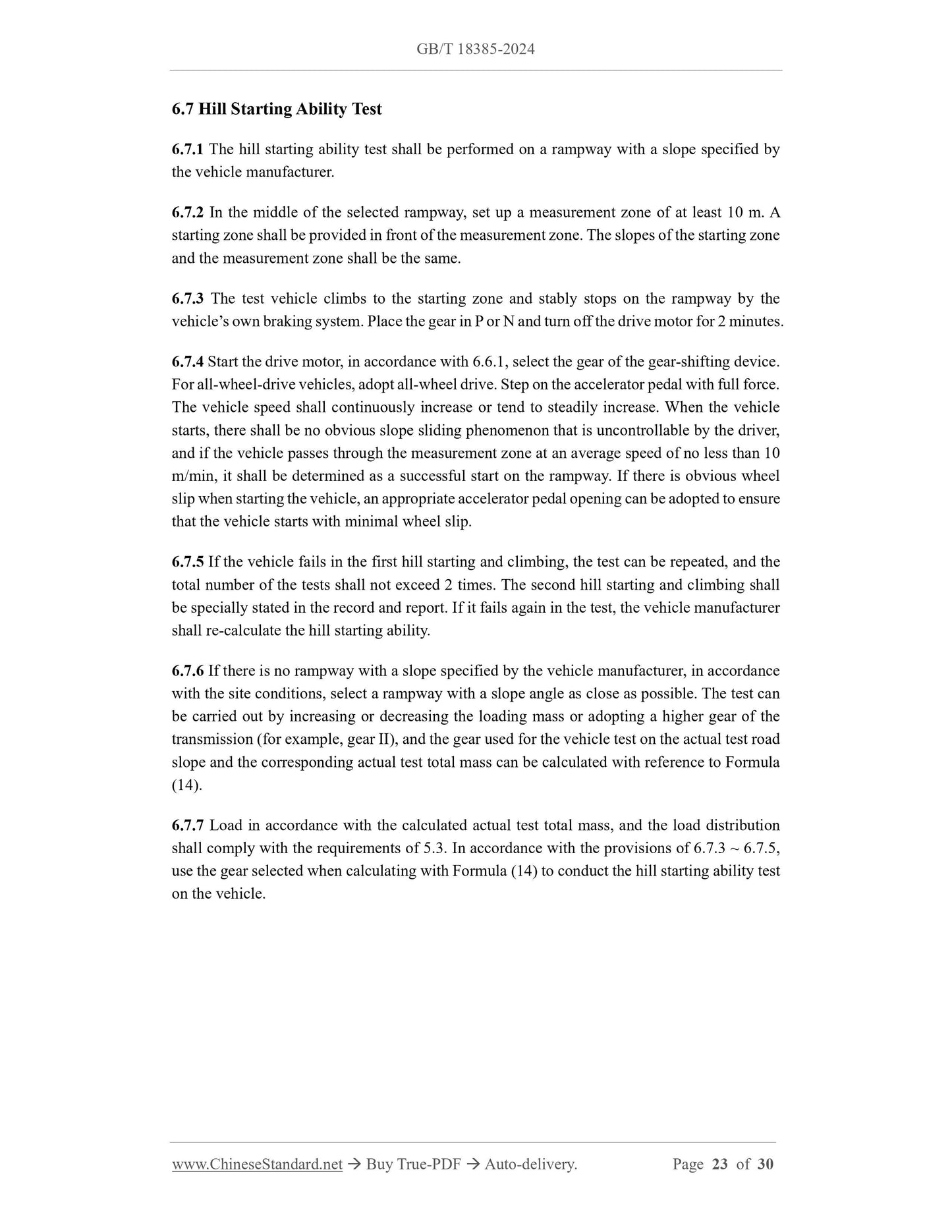1
/
of
10
www.ChineseStandard.us -- Field Test Asia Pte. Ltd.
GB/T 18385-2024 English PDF (GB/T18385-2024)
GB/T 18385-2024 English PDF (GB/T18385-2024)
Regular price
$380.00
Regular price
Sale price
$380.00
Unit price
/
per
Shipping calculated at checkout.
Couldn't load pickup availability
GB/T 18385-2024: Battery electric vehicles - Power performance - Test method
Delivery: 9 seconds. Download (and Email) true-PDF + Invoice.Get Quotation: Click GB/T 18385-2024 (Self-service in 1-minute)
Newer / historical versions: GB/T 18385-2024
Preview True-PDF
Scope
This document describes the test method for the power performance of battery electric vehicles.This document is applicable to Category-M and Category-N battery electric vehicles.
Basic Data
| Standard ID | GB/T 18385-2024 (GB/T18385-2024) |
| Description (Translated English) | Battery electric vehicles - Power performance - Test method |
| Sector / Industry | National Standard (Recommended) |
| Classification of Chinese Standard | T47 |
| Classification of International Standard | 43.120 |
| Word Count Estimation | 22,279 |
| Date of Issue | 2024-08-23 |
| Date of Implementation | 2025-03-01 |
| Issuing agency(ies) | State Administration for Market Regulation, China National Standardization Administration |
Share
